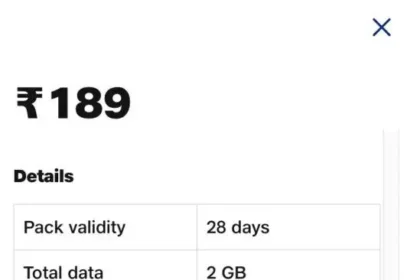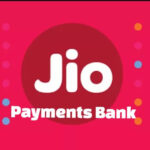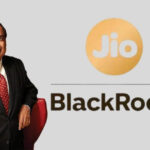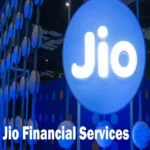In a major development that is disturbing the Indian broadcasting segment, Reliance Jio has submitted new broadcast tariff plans under another new SPV named Reliance Jio Star.
This comes from the amalgamation of Star India and Viacom18 Platform, which brought a broadcasting major that may alter television viewership in India.
The price increase on their channel packs is considerable, which I have indicated as an 18% rise from the previous channel packs. Here is all you need to know about the new pricing strategies, new channels, and the overall implications for consumers.
The Rise of Reliance Jio Star
Having merged Star India and Viacom18, Reliance Industries came into the creation of Reliance Jio Star – an entity likely to take over the broadcasting domain in India. This happened as the company has filed a new tariff plan that seeks to implement an 18% charge on its channel packages.
Reliance Jio has entered the new fiscal year with a new portfolio containing 83 packs and 134 channels, which has created a new benchmark for the broadcasting market in India. This strategic decision will be the first step in starting a new era in television content distribution by Reliance Jio Star.
The services offered by Reliance Jio Star cover entertainment, sports, news, and infotainment avenues. Out of the 134 channels available, 85 are in standard definition, 44 in high definition, and five are free to air. This selection is chosen to allow any type of viewer across the country to tune into something they might find interesting.

To know more about the recent news and offers related to Reliance Jio, read on.
Reliance Jio Star has formed at the right time as more and more changes are witnessed in the Indian broadcasting industry, especially due to the emergence of OTT services. The newly merged entity targets an optimized content offering and broadcasting rights as a winning proposition against rivals.
Price Hike: What’s New in Reliance Jio Tariffs?
The most remarkable changes in the new pricing structure are the increases in the prices of the Star Value Pack (SVP) and Star Value Pack Hindi Basic (SVP HB) of standard-definition channels.
These packs, now available for ₹110, have gotten dearer by 18% of what the price of Hindi packs used to be before this merger and before Star India and Viacom18 signed separate deals separately with broadcasters. To keep it in context, the Hindi pack of Star India was ₹59, while Viacom18’s cost ₹34.
This new pricing is a massive revolution to the cost of viewing popular content under the Reliance Jio Star programs. Nevertheless, Reliance Jio Star plans to maintain its grip on the market, appealing to the numerous Indian viewers of cricket events purchased as the company’s exclusive broadcasting rights.
The increase in the subscription tariffs is also in line with the current trend seen across the Indian broadcast market, where broadcasters have been forced to adjust tariffs to contain the effects of growing competition from the OOT platforms.
Conventionally based cable and DTH services have been affected by the rise of digital platforms like NetFlix, Amazon Prime, and Disney+Hotstar, leading broadcasters to modify prices. This pressure can altogether be seen as a rationale for Reliance Jio Star’s recent decision to raise tariffs.
A Broad Range of Content
With the new tariff plans of Reliance Jio Star company, there is a large list of interesting and varied channels. These 134 channels encompass all sorts of programs in entertainment, sporting events, and news, as well as informative programs, also known as infotainment.
Some of the most popular channels under the Reliance Jio Star umbrella include:
- Star Plus
- Colors
- Star Gold
- Star Sports
These channels have traditionally featured in Indian households, and including these channels in the new package must have been deliberate to create a loyal clientele base.
Supporting the channel list of Reliance Jio Star, it has the right to broadcast some of the most popular programs in India, such as IPL cricket, International Cricket Council matches, and all the boards of control for cricket in India matches.
These high-value content rights also guarantee that Reliance Jio Star can offer its services in the market in an effective manner, and in turn, it has a competitive edge.
Also, the company provides its Reliance Jio Star, offering 19 news channels from Network18, such as News18 India, CNBC TV18, CNN News18 &, etc, along with various regional channels, including News18 Bangla & News18 Tamil Nadu.
This enhanced news coverage increases the attractiveness of the new tariff plans. Therefore, Reliance Jio Star is ready to offer its services to various groups of citizens throughout the country.
The Impact of the Price Hike
The proposed 18% hike in pricing is likely to have an impact on many consumers, especially those who have been accustomed to the previous lower tariffs enacted by Star India and Viacom18.
However, such an action is not unique to TV2 because the broadcasting industry is characterized by other players who have also strived to increase prices recently. Like others, Sony Pictures Networks India (SPNI) and Zee Entertainment Enterprises Ltd (ZEEL) have raised the base package by more than 10%.
However, the above increase in the price of Reliance Jio Star may look big; it is in accord with the general trends in the market. Broadcasters are experiencing pressures such as continually reduced customer viewing, a shift towards OTT platforms, and the new dynamics of the entertainment market.
The pricing of conventional cable and DTH services has hit the red mark and triggered the alteration of their prices by key players in the market.
An important point is that these prices are not fixed or permanent. The last rates are expected to be market-driven and may include deals such as Reliance Jio with TV distributors.
Such discussions are focused on a positive effect on consumers and, at the same time, on the capacity of the broadcasters to get back their costs and make profits.
The Changing Landscape of Indian Broadcasting
The recent changes that have occurred in the broadcasting sector are a pointer to the dynamics that are characterizing entertainment in India. Reliance Jio has tried to capture more than 50% of the market by securing broadcasting rights, especially for cricket and other famous events that are broadcast nationally.
Thanks to the Reliance Jio Star, it has final credentials for broadcasting IPL, ICC events, and match BCCI, which makes it very difficult for opponents to match and fight along with it.
The above price increase by Reliance Jio Star can also be seen as a result of the emergence of over-the-top or OTT players such as Netflix, Amazon Prime, and Disney+ Hotstar.
These services have steadily increased in demand in India, particularly during the pandemic, when content consumption shifted to online mode. Reliance Jio Star’s decision to raise prices aims to break even in a competitive market to offer rich content to its consumers.
What’s Next for Reliance Jio Star?
Increasing its prices is one of the many strategies Reliance Jio Star implements to rejuvenate the traditional broadcasting industry in India. Considering the great amount of content available from the company and its parent brand, Reliance Jio, the company is ready to take a leading position in the market.
Nevertheless, this concept’s success largely depends on the overall consumer response to this new higher tariff rate, and Reliance Jio Star sustains its dominance in this emerging domain.
At the moment, such a price hike to 18% must yield more revenue to this broadcasting giant, and this revenue can be utilized to purchase more quality content and grow its network even larger. Similarly, Reliance Jio Star will have to reinvent itself and learn to evolve with customer needs, especially as the amount of OTT content increases.
What Does This Mean for Consumers?
In the new pricing structure, consumers will have to pay more for their current channel packs, which they are accessing at a cheaper rate. The increase would likely attract some dissatisfaction from the viewers familiar with the earlier, lower-priced charges.
However, many will still benefit from the new packages because they include more programs like cricket transmission and other entertainment channels.
Consumers should consider various packages and determine if this new price structure is perfect for their preferences. Also, viewers could have to consider OTT platforms as part of the entertainment consumption market when planning their spending on entertainment.
Conclusion
The latest application by Reliance Jio Star to seek permission to raise its broadcast tariff plans by 18 percent marks a new phase in the Indian broadcasting business. With this large content list, Reliance Jio Star holds major cricket broadcasting rights and is set to capture a massive market share.
That is why the price increase may be shocking for many people, though it is perfectly logical for the company to do so – it is one of the leaders in the industry.
Since Reliance Jio is growing its market customer base and improving the array of services, viewers should expect more variety in programs and content of even higher quality but at a slightly higher tariff.
Despite the competitive pressure, Reliance Jio Star appears ready for these conditions and ready to remain the leader in the market. For consumers, the challenge will involve identifying high-quality, paid content that will offset the cost of the steadily rising price of conventional broadcast packages.
Read more about all the new developments that have recently taken place in India’s broadcasting market on The Times of India.
Disclaimer
It should be noted that the information provided in this article was collected up to the time of writing it and may, therefore, be affected by changes in the future. Official sources should corroborate all details mentioned above before acting on them.
FAQs
Q1. Why is Reliance Jio Star increasing its prices?
Due to the gradually rising cost of quality content and accessing premium rights of broadcasting, especially IPL and ICC tournaments, Reliance Jio Star has been forced to review its tariff offers upward.
Q2. How much has the price hike been?
It is 18% on channel packages that include the star value pack and the star value pack Hindi Basic.
Q3. Are the new prices final?
The latter will depend on individual negotiations between broadcasters and distributors of the given programs. They may be different depending on the existing circumstances in the market.
Q4. How will this affect consumers?
While customers can be charged a little more for channel packs, they can gain better content with exclusive cricket and entertainment channels.








